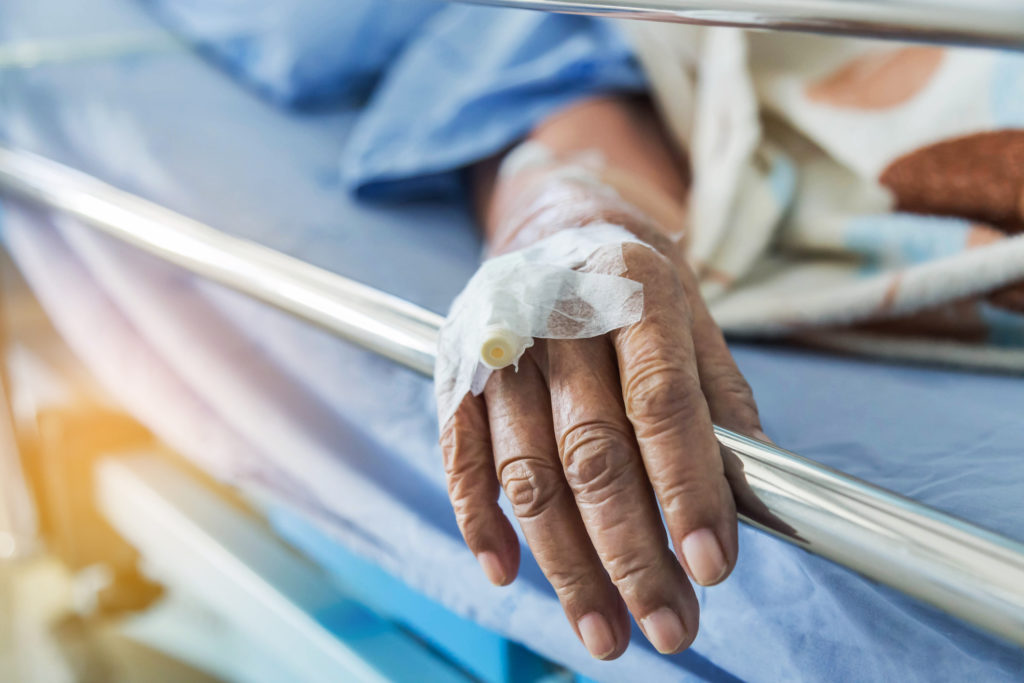The Harm of Physical Restraints in Nursing Homes
Nursing Home Abuse and Neglect,Personal Injury - July 23, 2013 by Horwitz, Horwitz & Associates
Nursing Home Abuse: Physical Restraints
Physical Restraints
The use of physical restraints is a source of concern for nursing home families, loved ones, and advocates for residents. “Physical restraints” are defined as any manual method or physical or mechanical device, material, or equipment attached or adjacent to the resident’s body that the individual cannot remove easily which restricts freedom of movement or normal access to one’s body. Some nursing home operators use restraints because they fear litigation if unrestrained residents injure themselves or others. Other reasons may be motivated by routine behavior, a negative attitude towards the elderly, and ignorance of harmful consequences.1 Physical restraints are implemented as a deliberate attempt to restrict movement of a resident.
Examples of physical restraints include:
- Side rails that keep a resident from voluntarily getting out of bed.
- Velcro to hold a sheet, fabric or clothing tightly so a resident’s movement is restricted
- Trays, tables, wheelchair bars, or belts that prevent a resident from rising
- Placing a resident in a chair or bed close to a wall that prevent the resident from rising out of the chair or voluntarily getting out of bed
Reasons for Restraints
Restraints may not be used for convenience. Federal surveys define “convenience” as any action taken by the facility to control a resident’s behavior or manage a resident’s behavior with a lesser amount of effort by the facility and not in the resident’s best interest. The use of physical restraints should be used as a measure of last resort to protect the safety of the resident or others.
A resident’s subjective symptoms may not be used as the sole basis for using a restraint. Before a resident is restrained, the facility must determine the presence of a specific medical symptom that would require the use of restraints, how the use of restraints would treat the medical symptom, protect the resident’s safety, and assist the resident in attaining or maintaining his or her highest practicable level of physical and psychosocial well-being. See Nursing Home Federal Requirements: Deficiencies Concerning Physical Restraints.2
Effects of Physical Restraints
Physical restraints cause harm to the residents. The use of physical restraints is associated with increased mortality and morbidity. Examples of the effects of physical restraints include3:
- Skin breakdown (Bed Sores)
- Incontinence
- Constipation
- Fecal impaction
- Manifestations of sad and anxious moods
- Behavioral problems
- Declines in mobility as well as death
More recent studies have shown that restraint use does not reduce serious falls and their associated complications.4
The use of physical restraints on residents is unethical and ignores a resident’s dignity. Nursing home staff is required, by law, to respect the autonomy of each and every resident. They must carefully assess the necessity for using a physical restraints and strive for alternatives. Human dignity must never be compromised for people who are ill, handicapped, or nearing death.
If you believe that your loved one has suffered emotional or physical damage due to the use of unethical physical restraints contact our offices to speak with an experienced nursing home abuse lawyer or Chicago personal injury lawyer today…
- Toll-free: 800-594-7433
Additional Nursing Home Resources:
References for information used in article:
1. “Use of physical restraint in nursing homes: clinical-ethical considerations”
2. Nursing Home Federal Requirements, Guidelines for Surveyors and Survey Protocol, 6th Edition
3. “Reducing the Use of Physical Restraints in Nursing Homes; Will it Increase Costs?”, American Journal of Public Health
4. “Use of physical restraints in nursing homes: clinical-ethical considerations”
Read More:
Blog: Nursing Homes Must Notify Family of Any Changes in Residents Condition



